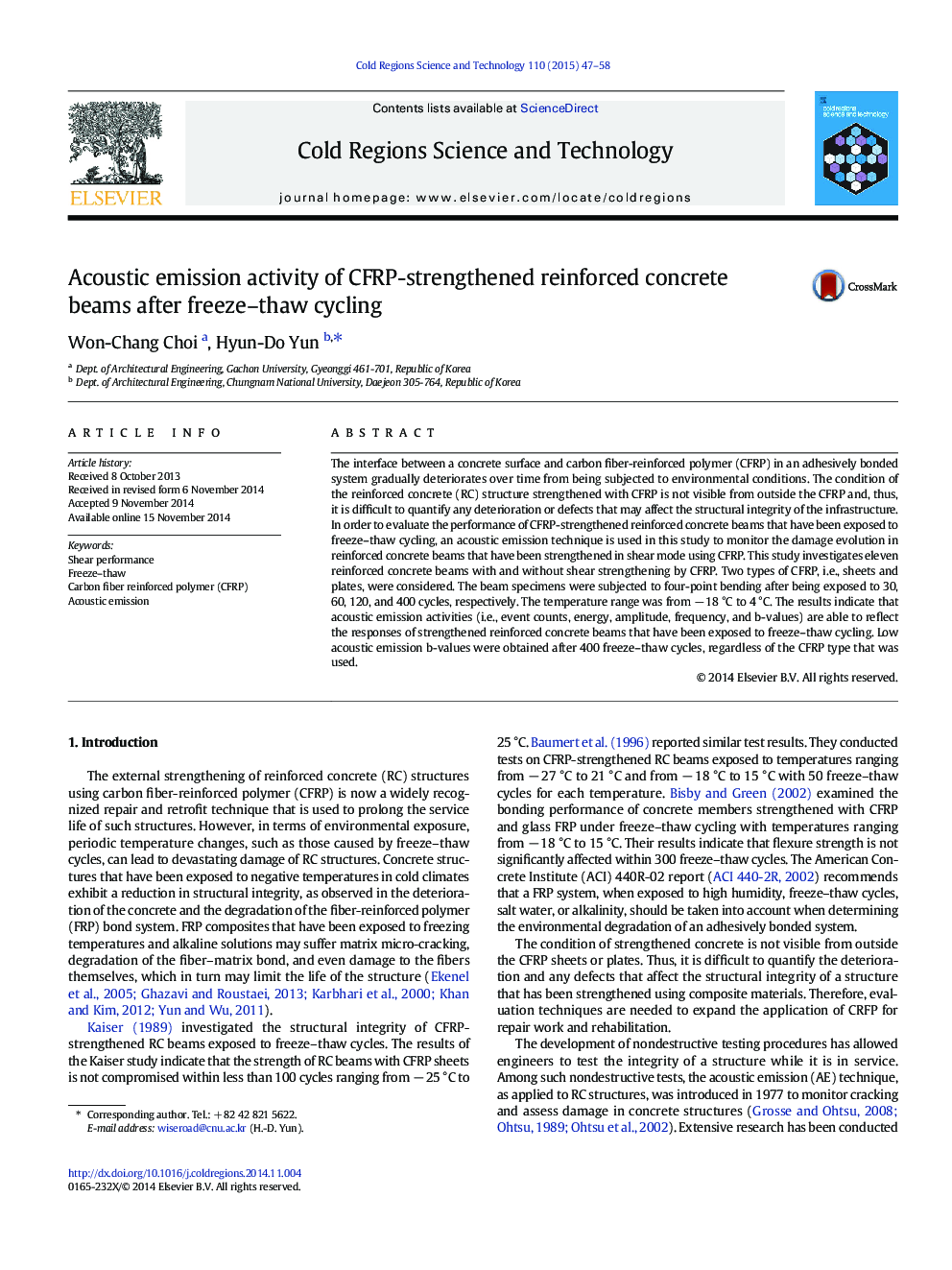| Article ID | Journal | Published Year | Pages | File Type |
|---|---|---|---|---|
| 6426806 | Cold Regions Science and Technology | 2015 | 12 Pages |
â¢Shear behavior of reinforced concrete (RC) beam after freeze-thaw (FT) actions was examined.â¢Investigated acoustic emission activities of beams exposed to FT after CFRP-strengtheningâ¢Assessed the damage of RC beams exposed to FT cycles with AE signals.
The interface between a concrete surface and carbon fiber-reinforced polymer (CFRP) in an adhesively bonded system gradually deteriorates over time from being subjected to environmental conditions. The condition of the reinforced concrete (RC) structure strengthened with CFRP is not visible from outside the CFRP and, thus, it is difficult to quantify any deterioration or defects that may affect the structural integrity of the infrastructure. In order to evaluate the performance of CFRP-strengthened reinforced concrete beams that have been exposed to freeze-thaw cycling, an acoustic emission technique is used in this study to monitor the damage evolution in reinforced concrete beams that have been strengthened in shear mode using CFRP. This study investigates eleven reinforced concrete beams with and without shear strengthening by CFRP. Two types of CFRP, i.e., sheets and plates, were considered. The beam specimens were subjected to four-point bending after being exposed to 30, 60, 120, and 400 cycles, respectively. The temperature range was from â 18 °C to 4 °C. The results indicate that acoustic emission activities (i.e., event counts, energy, amplitude, frequency, and b-values) are able to reflect the responses of strengthened reinforced concrete beams that have been exposed to freeze-thaw cycling. Low acoustic emission b-values were obtained after 400 freeze-thaw cycles, regardless of the CFRP type that was used.
